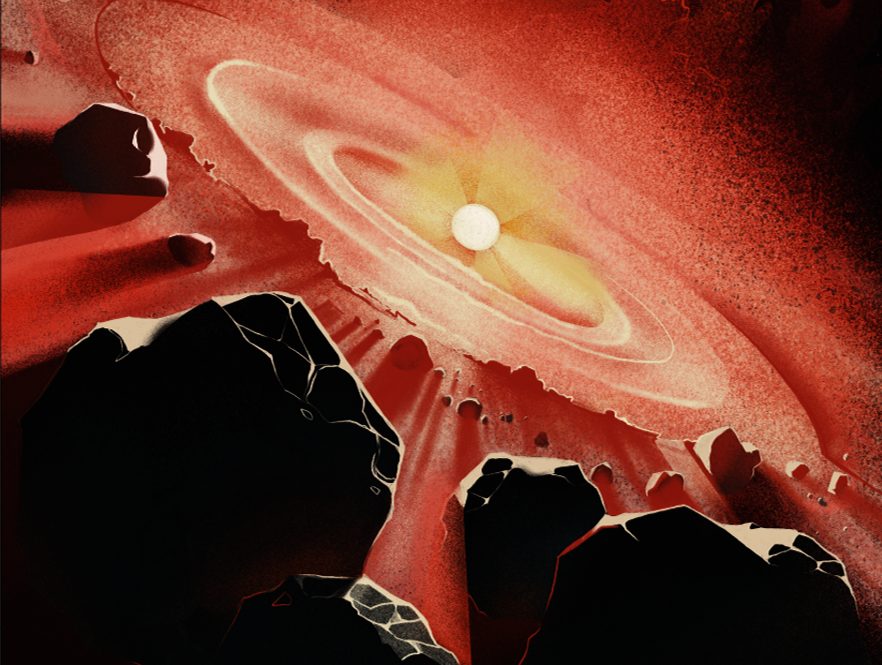The following is not a comprehensive list of all publications. For inquiries, please contact Chris Ruiz.
- A. Lennarz, M. Williams, A. M. Laird, U. Battino, A. A. Chen, D. Connolly, B. Davids, N. Esker,
R. Garg, M. Gay, U. Greife, U. Hager, D. Hutcheon, J. Jos´e, M. Lovely, S. Lyons, A. Psaltis, J. E.
Riley, A. Tattersall, and C. Ruiz. First inverse kinematics measurement of key resonances in the 22Ne(p,gamma)23Na reaction at stellar temperatures.
Physics Letters B, 807:135539, August 2020. - J. Fallis, C. Akers, A.M. Laird, A. Simon, A. Spyrou, G. Christian, D. Connolly, U. Hager, D.A.
Hutcheon, A. Lennarz, P. O’Malley, S.J. Quinn, J. Riley, A. Rojas, C. Ruiz, and M. Williams. First measurement in the gamow window of a reaction for the !-process in inverse kinematics: 76se(alpha,gamma)80kr.
Physics Letters B, 807:135575, 2020. - M. P. Taggart, C. Akers, A. M. Laird, U. Hager, C. Ruiz, D. A. Hutcheon, M. A. Bentley, J. R. Brown,
L. Buchmann, A. A. Chen, J. Chen, K. A. Chipps, A. Choplin, J. M. D’Auria, B. Davids, C. Davis,
C. Aa. Diget, L. Erikson, J. Fallis, S. P. Fox, U. Frischknecht, B. R. Fulton, N. Galinski, U. Greife,
R. Hirschi, D. Howell, L. Martin, D. Mountford, A. St. J. Murphy, D. Ottewell, M. Pignatari, S. Reeve,
G. Ruprecht, S. Sjue, L. Veloce, and M. Williams. A direct measurement of the 17O(alpha,gamma)21Ne reaction in inverse kinematics and its impact on heavy element production.
Physics Letters B, 798:134894, November 2019. - D. Connolly, P. D. O’Malley, C. Akers, A. A. Chen, G. Christian, B. Davids, L. Erikson, J. Fallis, B. R.
Fulton, U. Greife, U. Hager, D. A. Hutcheon, S. Ilyushkin, A. M. Laird, A. Mahl, and C. Ruiz. Direct measurement of resonance strengths in 34S(alpha ,gamma )38Ar at astrophysically relevant energies using the DRAGON recoil separator.
Physical Review C, 97:035801, March 2018. - G. Christian, G. Lotay, C. Ruiz, C. Akers, D. S. Burke, W. N. Catford, A. A. Chen, D. Connolly,
B. Davids, J. Fallis, U. Hager, D. Hutcheon, A. Mahl, A. Rojas, and X. Sun. Direct measurement of astrophysically important resonances in 38K(p ,gamma )39Ca.
Physical Review C, 97:025802, February 2018. - R. Wilkinson, G. Lotay, A. Lennarz, C. Ruiz, G. Christian, C. Akers, W. N. Catford, A. A. Chen,
D. Connolly, B. Davids, D. A. Hutcheon, D. Jedrejcic, A. M. Laird, L. Martin, E. McNeice, J. Riley,
and M. Williams. Direct Measurement of the Key Ec.m.=456 keV Resonance in the Astrophysical
19Ne (p ,gamma )20Na Reaction and Its Relevance for Explosive Binary Systems.
Physical Review Letters, 119:242701, December 2017. - J. R. Tomlinson, J. Fallis, A. M. Laird, S. P. Fox, C. Akers, M. Alcorta, M. A. Bentley, G. Christian,
B. Davids, T. Davinson, B. R. Fulton, N. Galinski, A. Rojas, C. Ruiz, N. de S´er´eville, M. Shen, and
A. C. Shotter. Measurement of 23Na (alpha,p )26Mg at Energies Relevant to 26Al Production in Massive
Stars.
Physical Review Letters, 115:052702, July 2015. - Chris Ruiz, Uwe Greife, and Ulrike Hager. Recoil separators for radiative capture using radioactive ion beams. Recent advances and detection techniques.
European Physical Journal A, 50:99, June 2014.


